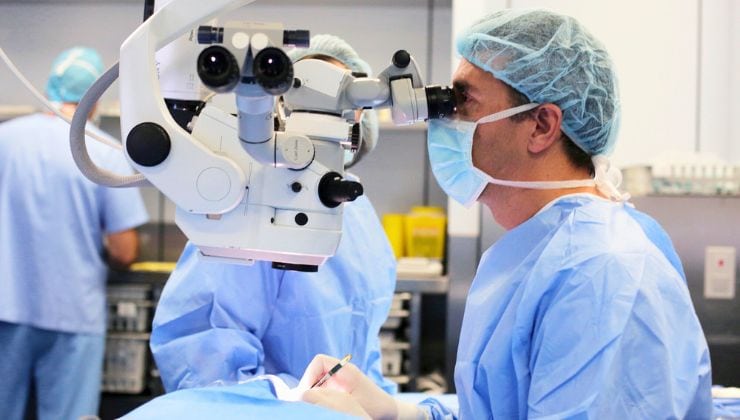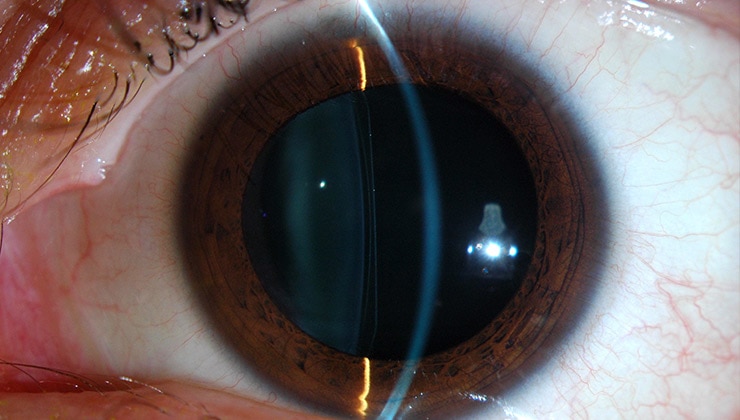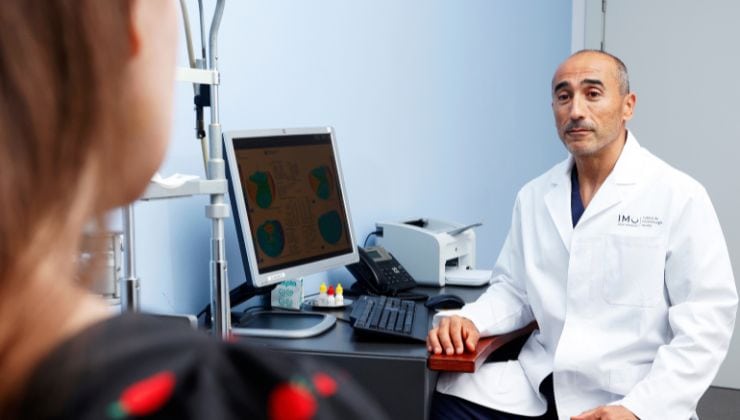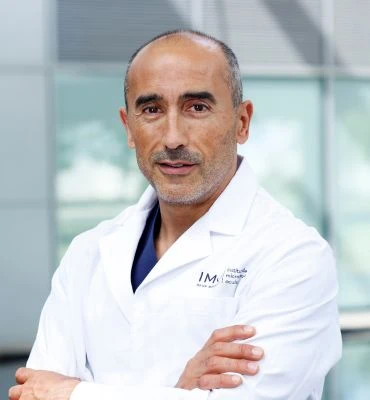
What does it involve?
Refractive surgery with intraocular lenses involves implanting phakic or pseudophakic lenses to correct refractive errors (myopia, hyperopia and astigmatism). It is indicated for those who wish to do without an optical correction.
Phakic lenses are implanted between the cornea and the crystalline lens, without removing it; thus, they tend to be indicated for young patients (under 40/45). One of its great advantages is that it is a reversible technique. Depending on the space that is available within the eye, they can correct some 20-21 dioptres in myopia and up to 10-12 dioptres in hyperopia. They can be placed in front of the iris (iris support lenses) or between the iris and the crystalline lens (ICL lenses).
Unlike phakic lenses, pseudophakic lenses do replace the crystalline lens, either because it has lost its accommodating function or because the crystalline lens is cloudy (cataract). The prescription that can be corrected with pseudophakic lenses is up to 35-40 dioptres in myopia and up to 20 in hyperopia.
When is it carried out?

Refractive surgery with phakic IOLs is indicated for patients with a high degree of hyperopia to correct high astigmatism and, when myopia is high or there is a contraindication for laser application in surface or inner layers of the cornea (Lasik) or for the implanting of intracorneal rings.
Usually, pseudophakic intraocular lenses, which are used in cataract surgery, are implanted in some patients with presbyopia or other refractive errors, who are generally over 45 years old.
It is necessary to have an eye examination to be able to consider the best option in each case, depending on the number of dioptres to correct and other factors.
Prior examination

Comprehensive eye examination, measurement of the anterior chamber and endothelial count.
Preoperatively
Patients should have three days of relative rest prior to surgery (only avoiding strenuous activities). They can lead a normal life after that, although it is important not to rub their eyes.
During surgery

Surgery is performed under topical anaesthesia and lasts for 15 to 20 minutes. It is carried out on an outpatient basis.
Risks
There are no other risks different from any surgery. After surgery, patients should have regular check-ups every 18 months or 2 years to ensure that the endothelial count (the number of cells present in the endothelium of the cornea) does not change.
Associated pathologies
Experts performing this treatment
FAQs
Nowadays, there are several techniques. The most popular for small refractive errors, such as myopia, hyperopia and astigmatism, is LASIK. In special cases there are other options available: phakic lenses, crystalline extraction, intracorneal lenses or intrastromal rings.
If a patient who has been operated on for cataracts or other intraocular processes suffers a severe loss of vision with noticeable eye redness and pain, he or she must go and see an ophthalmologist urgently and without delay, as the emergency could threaten the vision of the eye.
IMO Institute of Ocular Microsurgery
Josep María Lladó, 3
08035 Barcelona
Phone: (+34) 934 000 700
E-mail: international@imo.es
See map on Google Maps
By car
GPS navigator coordinates:
41º 24’ 38” N – 02º 07’ 29” E
Exit 7 of the Ronda de Dalt (mountain side). The clinic has a car park with more than 200 parking spaces.
By bus
Autobus H2: Rotonda de Bellesguard, parada 1540
Autobus 196: Josep Maria Lladó-Bellesguard, parada 3191
Autobuses H2, 123, 196: Ronda de Dalt – Bellesguard, parada 0071
How to arrive at IMO from:
IMO Madrid
C/ Valle de Pinares Llanos, 3
28035 Madrid
Phone: (+34) 910 783 783
See map in Google Maps
Public transport
Metro Lacoma (líne 7)
Autobuses:
- Lines 49 & 64, stop “Senda del Infante”
- Line N21, stop “Metro Lacoma”
Timetables
Patient care:
Monday to Friday, 8 a.m. to 9 p.m.
IMO Andorra
Av. de les Nacions Unides, 17
AD700 Escaldes-Engordany, Andorra
Phone: (+376) 688 55 44
See map in Google Maps
IMO Manresa
C/ Carrasco i Formiguera, 33 (Baixos)
08242 – Manresa
Tel: (+34) 938 749 160
See map in Google Maps
Public transport
FGC. Line R5 & R50 direction Manresa. Station/Stop: Baixador de Manresa
Timetables
Monday to Friday, 09:00 A.M – 07:00 PM








